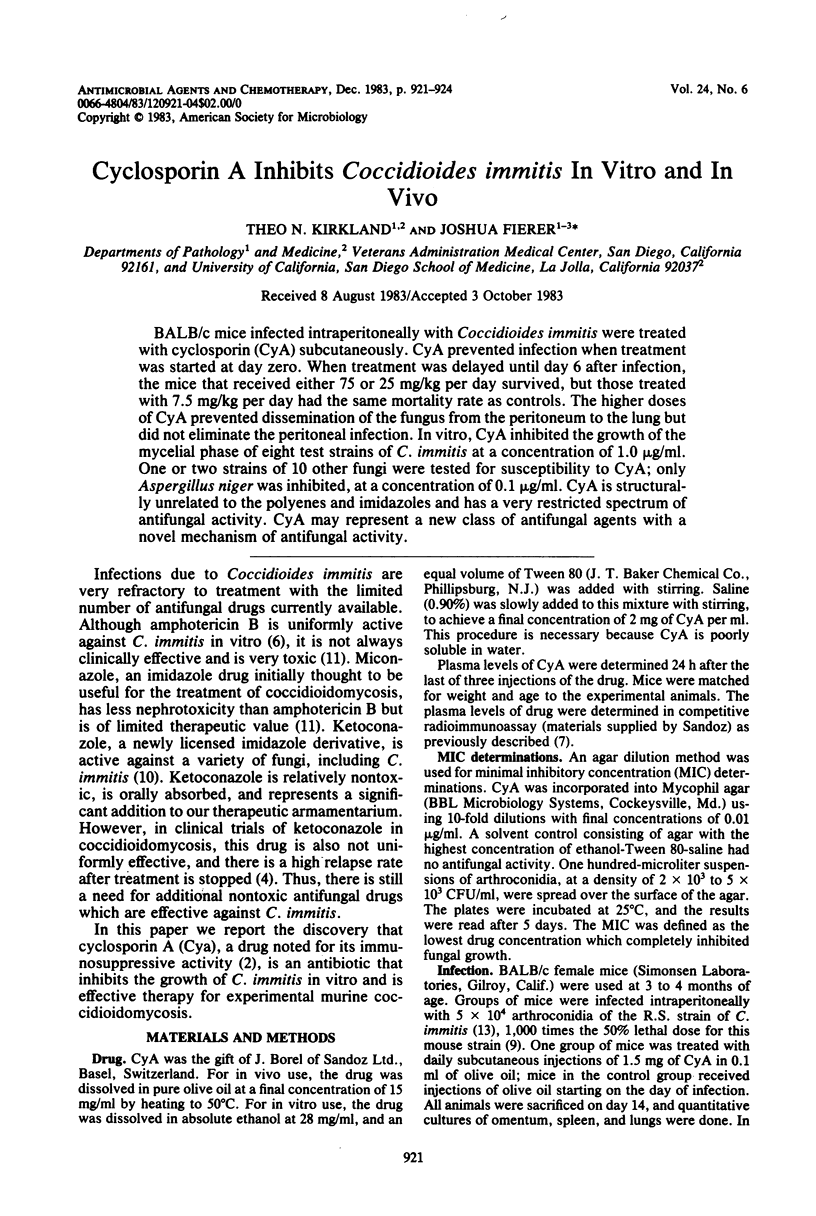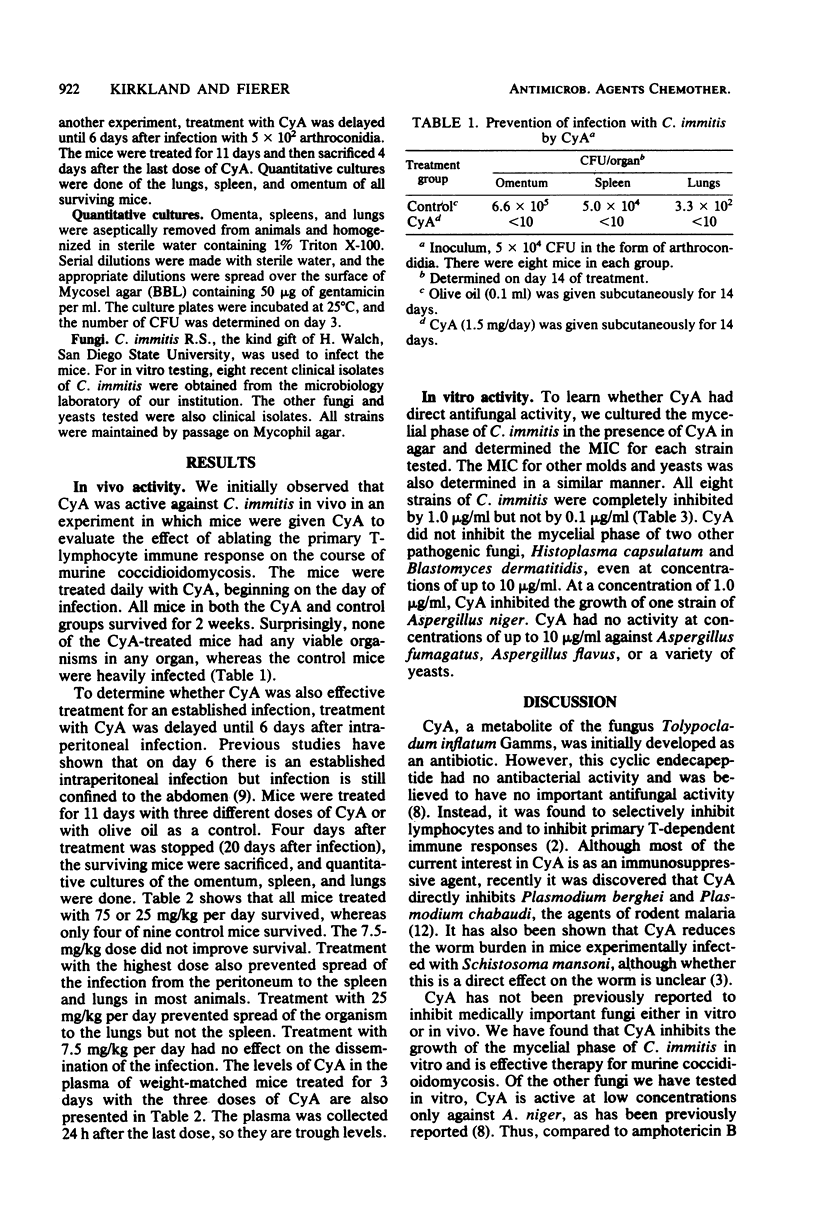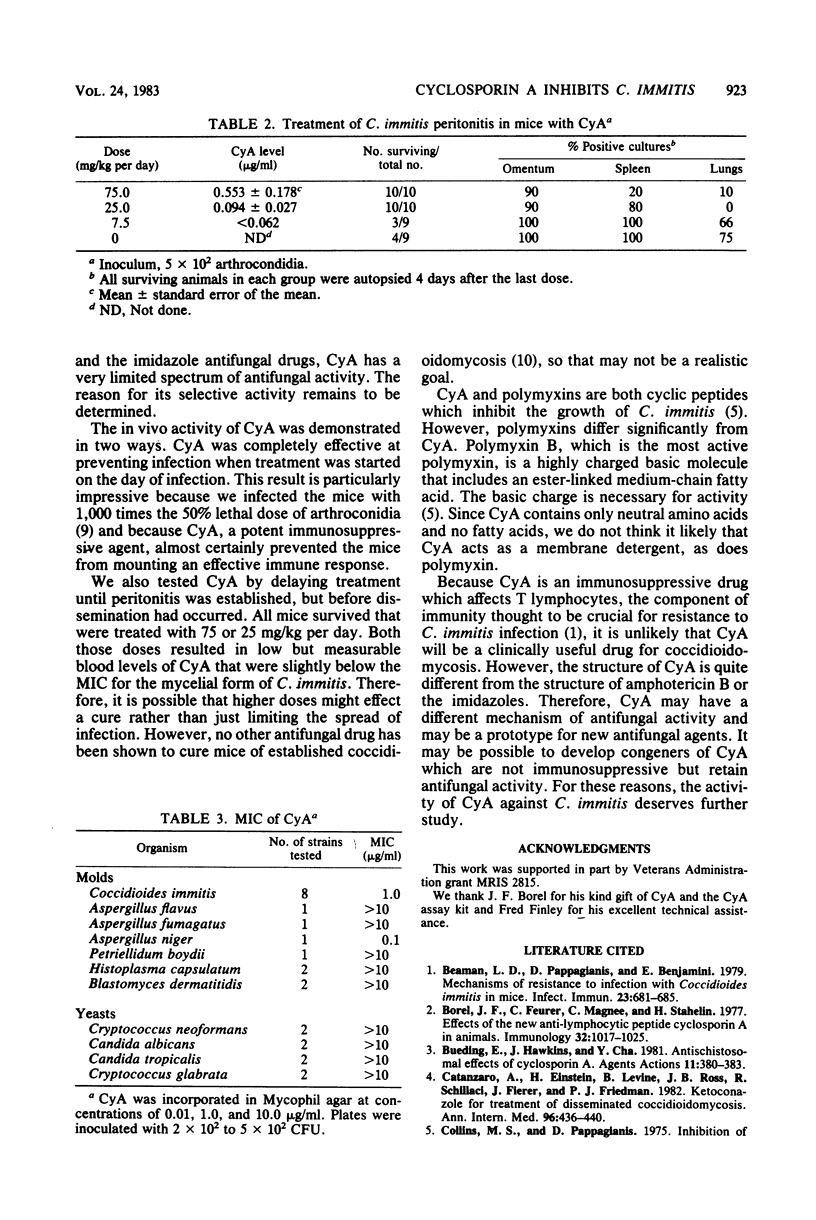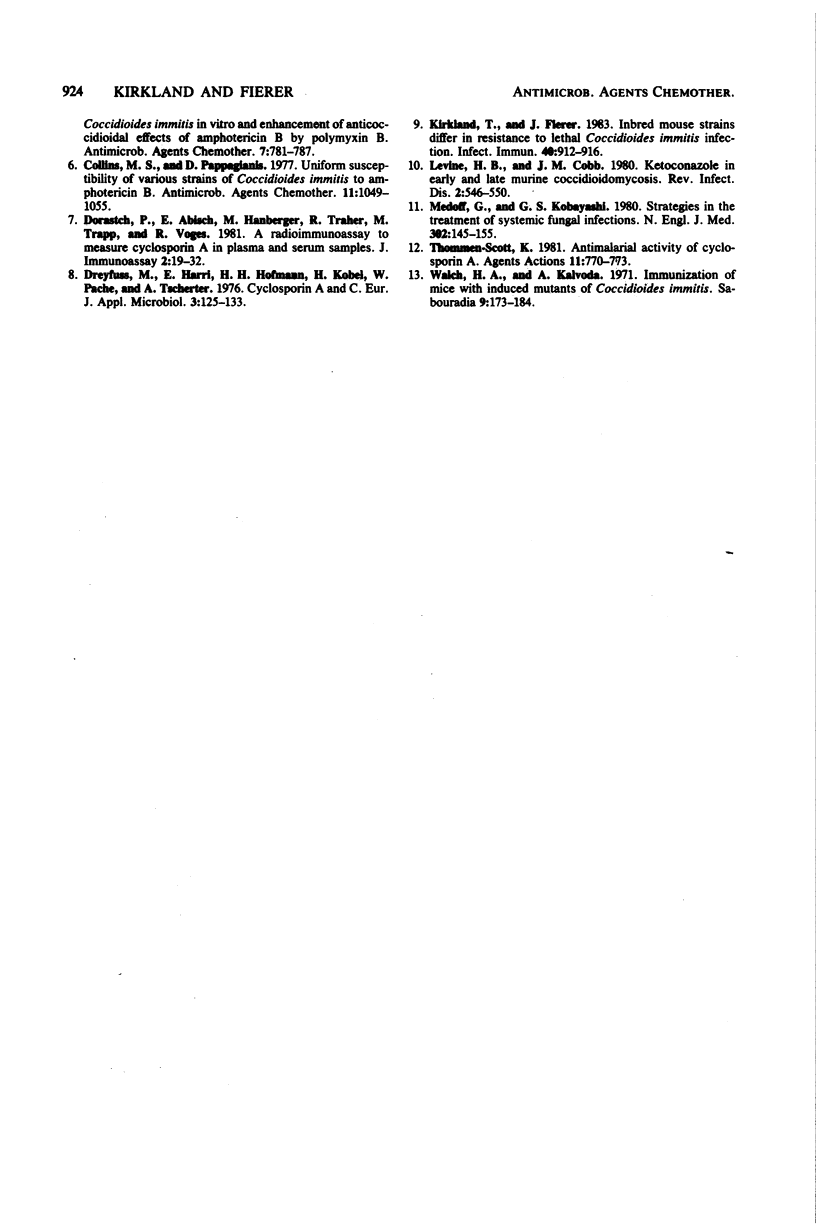Abstract
BALB/c mice infected intraperitoneally with Coccidioides immitis were treated with cyclosporin (CyA) subcutaneously. CyA prevented infection when treatment was started at day zero. When treatment was delayed until day 6 after infection, the mice that received either 75 or 25 mg/kg per day survived, but those treated with 7.5 mg/kg per day had the same mortality rate as controls. The higher doses of CyA prevented dissemination of the fungus from the peritoneum to the lung but did not eliminate the peritoneal infection. In vitro, CyA inhibited the growth of the mycelial phase of eight test strains of C. immitis at a concentration of 1.0 microgram/ml. One or two strains of 10 other fungi were tested for susceptibility to CyA; only Aspergillus niger was inhibited, at a concentration of 0.1 microgram/ml. CyA is structurally unrelated to the polyenes and imidazoles and has a very restricted spectrum of antifungal activity. CyA may represent a new class of antifungal agents with a novel mechanism of antifungal activity.
Full text
PDF



Selected References
These references are in PubMed. This may not be the complete list of references from this article.
- Beaman L. V., Pappagianis D., Benjamini E. Mechanisms of resistance to infection with Coccidioides immitis in mice. Infect Immun. 1979 Mar;23(3):681–685. doi: 10.1128/iai.23.3.681-685.1979. [DOI] [PMC free article] [PubMed] [Google Scholar]
- Borel J. F., Feurer C., Magnée C., Stähelin H. Effects of the new anti-lymphocytic peptide cyclosporin A in animals. Immunology. 1977 Jun;32(6):1017–1025. [PMC free article] [PubMed] [Google Scholar]
- Bueding E., Hawkins J., Cha Y. N. Antischistosomal effects of cyclosporin A. Agents Actions. 1981 Jul;11(4):380–383. doi: 10.1007/BF01982474. [DOI] [PubMed] [Google Scholar]
- Catanzaro A., Einstein H., Levine B., Ross J. B., Schillaci R., Fierer J., Friedman P. J. Ketoconazole for treatment of disseminated coccidioidomycosis. Ann Intern Med. 1982 Apr;96(4):436–440. doi: 10.7326/0003-4819-96-4-436. [DOI] [PubMed] [Google Scholar]
- Collins S., Pappagians D. Inhibition of Coccidioides immitis in vitro and enhancement of antiococcidiodial effects of amphotericin B by polymyxin B. Antimicrob Agents Chemother. 1975 Jun;7(6):781–787. doi: 10.1128/aac.7.6.781. [DOI] [PMC free article] [PubMed] [Google Scholar]
- Donatsch P., Abisch E., Homberger M., Traber R., Trapp M., Voges R. A radioimmunoassay to measure cyclosporin A in plasma and serum samples. J Immunoassay. 1981;2(1):19–32. doi: 10.1080/01971528108062989. [DOI] [PubMed] [Google Scholar]
- Levine H. B., Cobb J. M. Ketoconazole in early and late murine coccidioidomycosis. Rev Infect Dis. 1980 Jul-Aug;2(4):546–550. doi: 10.1093/clinids/2.4.546. [DOI] [PubMed] [Google Scholar]
- Medoff G., Kobayashi G. S. Strategies in the treatment of systemic fungal infections. N Engl J Med. 1980 Jan 17;302(3):145–155. doi: 10.1056/NEJM198001173020304. [DOI] [PubMed] [Google Scholar]
- Walch H. A., Kalvoda A. Immunization of mice with induced mutants of Coccidioides immitis. I. Characterization of mutants and preliminary studies of their use as viable vaccines. Sabouraudia. 1971 Nov;9(3):173–184. [PubMed] [Google Scholar]


